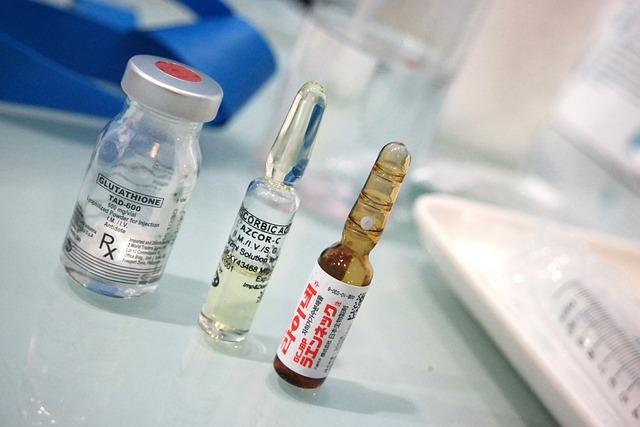Semaglutide's injectable formulation, a powerful tool in diabetes and weight management, requires meticulous handling for optimal efficacy and patient safety. Key practices include storing it between 2°C-8°C (35°F-46°F), away from light, and avoiding freezing to maintain potency. Proper storage, hand hygiene, injection preparation, and disposal techniques are essential to prevent contamination and ensure the medication retains its quality. Home storage necessitates consistent refrigeration, accurate dosing, and adherence to expiration dates for safe self-management. Responsible disposal methods, like proper sharps container usage and adhering to local waste regulations, protect both patients and the environment.
Discover the essential practices for storing and handling semaglutide injections with this comprehensive guide. Learn how to optimize stability and effectiveness through proper storage conditions, while preventing contamination and damage during administration. We’ll explore best practices for injection techniques, address common challenges, and provide expert tips for safe disposal. Understanding the unique properties of the semaglutide injectable form is crucial for ensuring optimal patient outcomes and medication integrity.
Understanding Semaglutide Injectable Form: An Overview

Semaglutide, a novel glucagon-like peptide-1 (GLP-1) receptor agonist, is increasingly prescribed for the management of type 2 diabetes and weight management. Its injectable form offers a convenient and effective treatment option for patients. Understanding the unique properties of semaglutide’s injectable formulation is essential for optimal storage and handling to ensure patient safety and efficacy. This involves grasping its stability requirements, ideal storage conditions, and potential exposure risks.
The semaglutide injectable form typically comes in pre-filled pens or vials, requiring proper handling throughout its lifecycle. It is a relatively large molecule, sensitive to environmental factors like temperature and light, which can impact its structural integrity and potency. Storage at the recommended temperatures, typically between 2°C and 8°C, helps maintain the medication’s stability and quality. Proper handling practices, including avoiding extreme heat or cold and minimizing exposure to direct sunlight, are crucial to prevent degradation and ensure the medication retains its intended therapeutic effect.
Storage Conditions for Optimal Stability and Effectiveness

To ensure optimal stability and effectiveness of semaglutide injections, proper storage conditions are crucial. This medication is typically supplied in an injectable form, requiring specific handling and storage to maintain its quality. Ideal storage conditions for semaglutide include temperatures between 2°C and 8°C (35°F to 46°F). Refrigeration is recommended to preserve the medicine’s potency, with a cold chain maintained from manufacturing to administration. Avoid freezing, as it can cause the drug to become ineffective.
Additionally, keep semaglutide injections away from direct sunlight and moisture. Humidity can degrade the medication over time, so storage in a dry place is essential. Ensure the vials or prefilled syringes are stored in their original packaging to protect them from light and other environmental factors. Proper storage practices will help maintain the integrity of the semaglutide injectable form, ensuring its safety and efficacy for patients.
Handling Precautions to Prevent Contamination and Damage

Proper handling is crucial to ensure the effectiveness and safety of Semaglutide injections, especially considering its delicate nature as a medication in the injectable form. To prevent contamination and damage, users should always handle the vials and needles with clean hands, avoiding any contact with unsterile surfaces. It’s recommended to store the semaglutide vials in their original packaging, protected from direct sunlight and extreme temperatures.
When drawing up the injection, be mindful not to touch the needle tip and ensure that the medication is drawn up correctly without air bubbles. After use, properly dispose of needles and vials according to local regulations to avoid accidental exposure or environmental contamination. Following these precautions will help maintain the integrity of your semaglutide injections, ensuring optimal results in your treatment regimen.
Proper Techniques for Semaglutide Injection Administration

Proper administration of semaglutide injections is paramount for ensuring efficacy and patient safety. When administering semaglutide in its injectable form, it’s crucial to follow recommended techniques. First, ensure proper storage conditions, keeping the medication refrigerated at all times to maintain stability. Before each injection, check the solution for any visible signs of degradation or changes in color.
Second, prepare the dose accurately by withdrawing the required amount from the vial using an appropriate syringe. Aspirate slowly to avoid air bubbles, which can affect dosage precision. Inject semaglutide into the intended site, typically the abdominal area, using a moderate to slow injection speed to minimize discomfort and maximize absorption. Always dispose of used needles safely and follow local regulations for waste management.
Common Challenges in Storing and Using Semaglutide Injections

Storing and using semaglutide injections can present several challenges for patients, especially those managing their diabetes at home. One of the primary concerns is maintaining the stability and efficacy of the semaglutide injectable form. This medication is sensitive to temperature fluctuations, requiring consistent refrigeration between 2°C and 8°C (35°F to 46°F) to prevent degradation. Accidental exposure to room temperature or higher can reduce its potency, emphasizing the need for proper storage practices.
Furthermore, users often face difficulties in accurately measuring and administering the prescribed doses. Semaglutide injections demand precise measurements to avoid under- or overdosing, which can lead to adverse effects. Tracking expiration dates is also crucial, as the medication’s effectiveness diminishes over time. These challenges necessitate patient education and clear communication with healthcare providers to ensure safe and effective self-management of semaglutide injections.
Best Practices for Disposal and Safety Measures

Proper disposal of semaglutide injections is paramount for safety and environmental considerations. After each use, inspect the syringe for any residual medication. If there’s remaining drug, dispose of it responsibly by adhering to local regulations for pharmaceutical waste. Never flush semaglutide or dispose of it in regular trash to prevent contamination of water sources and ecosystems.
To ensure safety during handling, always wear clean gloves when disposing of used syringes. Place the used needle in a rigid, leak-proof container designed for sharps disposal. Keep this container out of reach of children and pets. Regularly wash your hands thoroughly after handling used injection equipment to minimize the risk of infection or cross-contamination.
